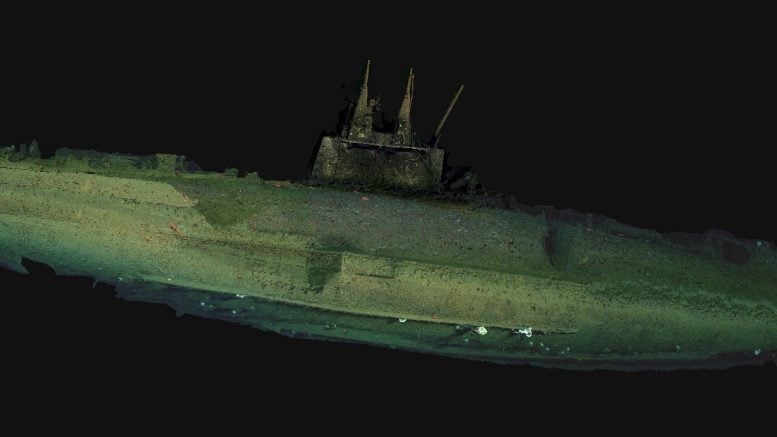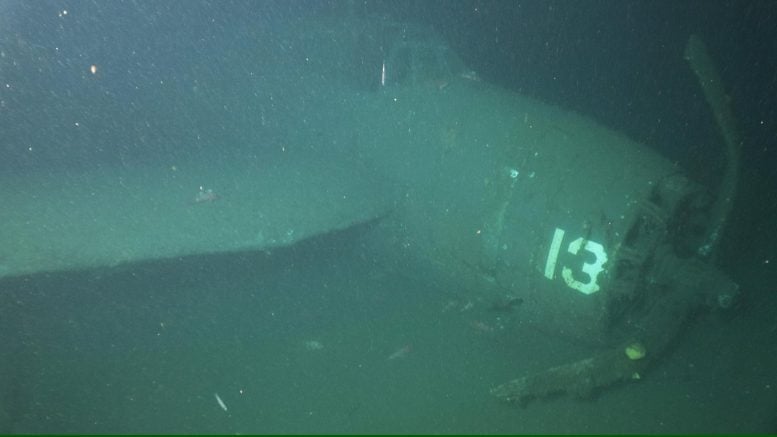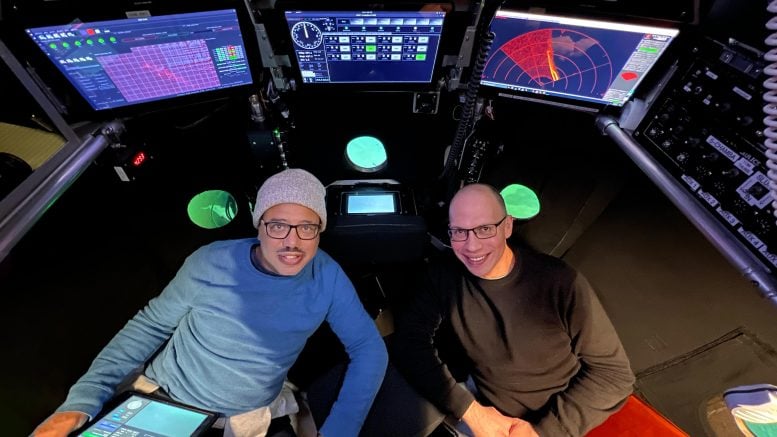
Deep-sea vehicles revealed detailed images of the USS F-1 submarine wreck. The expedition also honored lost sailors and trained future scientists.
A recent deep-sea training and engineering mission off the coast of San Diego allowed researchers to capture unprecedented images of the U.S. Navy submarine USS F-1. The vessel sank on December 17, 1917, after a fatal accident that claimed the lives of 19 crew members. Thanks to interagency collaboration and state-of-the-art imaging tools, the century-old submarine’s resting place was documented in striking high-definition detail.
Between February 24 and March 4, a team from the Woods Hole Oceanographic Institution (WHOI) deployed two key vehicles from the National Deep Submergence Facility (NDSF) fleet: the human-occupied submersible Alvin and the autonomous underwater vehicle Sentry.
These platforms enabled researchers to obtain close-up views of the wreck, which lies roughly 400 meters (over 1,300 feet) beneath the surface. Supported by the U.S. National Science Foundation (NSF), the expedition also served as a testing mission for Alvin and Sentry’s engineering systems.

Throughout the cruise, the team carried out detailed mapping of the submarine using sonar equipment on both Sentry and the research vessel Atlantis, while additional imagery was gathered by tethered cameras and Alvin’s onboard still and video systems. In addition to the submarine, the survey included a U.S. Navy torpedo bomber that crashed in the same area in 1950.
Technology and teamwork in action
“Advanced ocean technology and simple teamwork played a big part in delivering these new images,” said WHOI’s Bruce Strickrott, manager of the Alvin Group at WHOI and the sub’s senior pilot who helped lead the expedition. “Once we identified the wreck and determined it was safe to dive, we were able to capture never-before-seen perspectives of the sub. As a U.S. Navy veteran, it was a profound honor to visit the wreck of the F-1 with our ONR and NHHC colleagues aboard Alvin.”
The successful surveys and imagery of the wrecks were achieved through the combined expertise and assistance of the Office of Naval Research (ONR), the University-National Oceanographic Laboratory System (UNOLS), the Naval History and Heritage Command (NHHC), and Woods Hole Oceanographic Institution (WHOI). Funding for the National Deep Submergence Facility (NDSF) fleet is provided by the National Science Foundation (NSF), with additional support from ONR and the National Oceanographic and Atmospheric Administration.

“The NDSF provides essential equipment for reaching the deep ocean,” said Lisa Clough, the acting division director for the NSF Division of Ocean Sciences. “Although HOV Alvin and AUV Sentry are critical for revealing deep-sea geologic hazards and studying remote ecosystems, they also offer opportunities to train the next generation of scientists and uncover crucial moments from our nation’s history.”
Honoring history beneath the waves
The Alvin Team carried out seven dives as part of a scheduled training and engineering mission designed both to help pilots-in-training refine their submersible skills and to test new technologies that advance deep-sea research. During these dives, the team conducted non-invasive visual surveys of the USS F-1, which also marked the first Alvin dive for Naval History and Heritage Command (NHHC) Underwater Archaeologist Brad Krueger. It was his first opportunity to personally explore a historical wreck site. The NHHC is dedicated to safeguarding and sharing the history of the U.S. Navy, a mission that includes the discovery, study, and preservation of naval vessels and aircraft.
“It was an incredibly exciting and humbling experience to visit these historically significant wrecks and to honor the sacrifice of these brave American Sailors,” said Krueger. “All of us at the NHHC are grateful for this collaboration, which also enabled us to document and assess the condition of the crafts.”
“As a Navy veteran, making this dive—together with another Navy veteran and a Navy historian—was a solemn privilege,” said ONR Program Officer Rob Sparrock, who was in the DSV Alvin as it surveyed and analyzed the sub. “Lasting nearly eight hours, there was time to contemplate the risks that all mariners, past and present, face. It also reminded me of the importance of these training dives, which leverage the knowledge from past dives, lessons learned, and sound engineering.”
Ceremony and commemoration at sea
A remembrance ceremony took place on board Atlantis above the location of the wreck after the dives. A bell rang out 19 times—one for each service member lost at sea. “History and archaeology are all about people and we felt it was important to read their names aloud,” said Krueger. “The Navy has a solemn responsibility to ensure the legacies of its lost Sailors are remembered.”
Rapidly improving imaging technology enhanced the team’s ability to survey and document the F-1 wreck site. Multi-beam sonar systems on R/V Atlantis and AUV Sentry produced detailed, high-resolution maps of the wreck and surrounding seafloor. Complementing this, high-resolution cameras on Alvin captured detailed video and still photos of the wreck that WHOI imaging specialists stitched into photogrammetric models capable of providing precise measurements of the sub and the animals that have colonized its wreckage over the years. The use of new tools and techniques provided real-time training for use on future missions, including mapping strategies in complex seafloor topography.
This wealth of data and imagery allowed the ocean imaging team at WHOI to reconstruct the F-1 submarine using photogrammetry, resulting in stunning 3-D models.
“While these depths were well within the dive capability for Alvin and Sentry, they were technical dives requiring specialized expertise and equipment,” said Anna Michel, NDSF chief scientist and co-lead of the expedition. “We were careful and methodical in surveying these historical sites so that we could share these stunning images, while also maintaining the reverence these sites deserve.”
Never miss a breakthrough: Join the SciTechDaily newsletter.
4 Comments
From 1997 through 2001, I was stationed at the US NAVY Deep Submergence Unit on North Island. Back then, I dove this wreck off Point Loma multiple times every year. I have good video from the DSRV-1 MYSTIC on BETA and HI8 bow camera in My house right now! The F-1 location has been known for decades!
other than poor choice of the word “LOST” in the title nowhere in the piece claims to have found a lost wreck, only improved imaging.
Is the wreck in one piece or is there a hole in it why did it sink can they bring it up
The F-1 sank due to a collision with the F-3 in in December 1917. Both boats were on the surface but fog impaired their vision. F-3 struck the port side of F-1 the boat sank in seconds. AVALON DSRV-2 took pictures of the boat in the between 1975 and 1978. I was acrew member on the DSRV at the time.